
The 8th Guards Order of Lenin Combined Arms Army is an army of the Russian Ground Forces, headquartered in Novocherkassk, Rostov Oblast, within Russia′s Southern Military District, that was reinstated in 2017 as a successor to the 8th Guards Army of the Soviet Union's Red Army, which was formed during World War II and was disbanded in 1998 after being downsized into a corps.

The Leningrad Military District was a military district of the Armed Forces of the Russian Federation. In 2010 it was merged with the Moscow Military District, the Northern Fleet and the Baltic Fleet to form the new Western Military District.
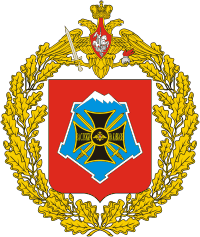
The North Caucasus Military District was a military district of the Russian Armed Forces, which became in 2010 the Southern Military District and lately also included the Black Sea Fleet and Caspian Flotilla.
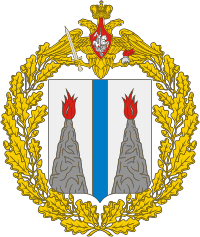
The Far Eastern Military District was a military district of the Armed Forces of the Russian Federation. In 2010 it was merged with the Pacific Fleet and part of the Siberian Military District to form the new Eastern Military District.
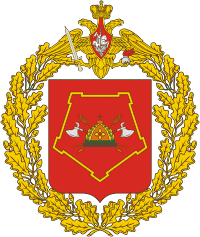
The Siberian Military District was a Military district of the Russian Ground Forces. The district was originally formed as a military district of the Russian Empire in 1864. In 1924 it was reformed in the Red Army. After the end of World War II the district was split into the Western and Eastern Siberian Military Districts. In 1956 the district was reformed. In 2010 it was divided between the two newly formed Central and Eastern Military Districts.
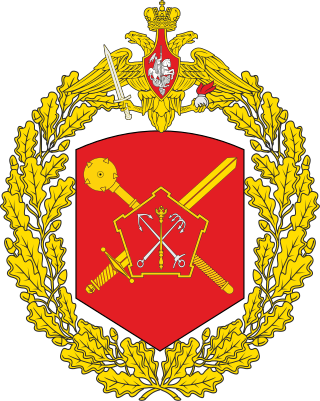
The 6th Army is a field army of the Red Army and the Soviet Army that was active with the Russian Ground Forces until 1998, and has been active since 2010 as the 6th Combined Arms Army.

The 90th Guards Tank Division was a division of the Soviet Army, and then of the Russian Ground Forces.
The 85th Leningrad-Pavlovsk Red Banner Motor Rifle Division was an infantry division of the Soviet Red Army converted to a motorised formation in 1957. It was part of the Russian Ground Forces until it was reorganised as the 32nd Separate Motor Rifle Brigade in 2009. In 2016, the 32nd Separate Motor Rifle Brigade was reorganised as the 228th Motor Rifle Regiment of the 90th Guards Tank Division.

The 2nd Guards Tank Army was a large military formation of the Red Army and later the Soviet Army, now part of the Russian Ground Forces of the Russian Federation.
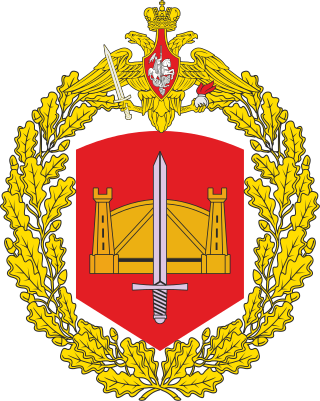
The 58th Combined Arms Army is an army of the Russian Ground Forces, headquartered at Vladikavkaz, North Ossetia-Alania, within Russia's Southern Military District. It was formed in 1941 as part of the Soviet Union's Red Army and has been part of the Russian Army since 1995.
The 3rd Shock Army was a field army of the Red Army formed during the Second World War. The "Shock" armies were created with the specific structure to engage and destroy significant enemy forces, and were reinforced with more armoured and artillery assets than other combined arms armies. Where necessary the Shock armies were reinforced with mechanised, tank, and cavalry units. During the Second World War, some Shock armies included armoured trains and air–sled equipped units.

The 38th Separate Guards Vitebskaya order of Lenin Red Banner order of Suvorov Motor Rifle Brigade is a mechanized infantry brigade of the Russian Ground Forces, part of the Eastern Military District.
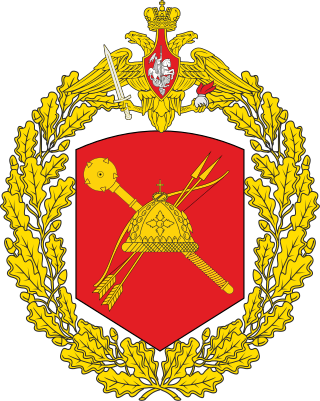
The 41st Combined Arms Army is a field army of the Russian Ground Forces, currently part of the Central Military District. Originally, it was formed in 1942 as part of the Soviet Red Army, during World War II. It was reformed in 1998, when the Transbaikal Military District and Siberian Military District were amalgamated.

The 22nd Mechanized Brigade is a formation of the Ukrainian Ground Forces. It traces its origins to the 66th Guards Rifle Division, originally a formation of the Red Army and later of the Soviet Ground Forces.
The 127th Red Banner Order of Kutuzov Motor Rifle Division is a division of the Russian Ground Forces. It was reformed from the 59th Separate and 70th Separate Guards Motor Rifle Brigades in 2018, and was the 127th Machine-Gun Artillery Division from 1990 to 2009. The division traces its history to the 66th Rifle Division of World War II.

The Western Military District is a military district of Russia.

The Southern Military District is a military district of Russia.

The Eastern Military District is a military district of Russia.
The 207th Rifle Division began its combat path under unusual circumstances. It was partly formed for the first time as a standard Red Army rifle division in the spring of 1941, before the German invasion, but was never completed. A second formation began in April 1942 and was completed on June 1, after which it was sent to the Stalingrad Front. Heavily depleted in counterattacks against the north flank of German Sixth Army, by November the survivors were reassigned and the division disbanded. The 207th was formed for a third time in June 1943, and fought its way through the central part of the Soviet-German front, ending the war in the heart of Berlin in the battle for the Reichstag. The division saw postwar service in the Group of Soviet Forces in Germany.
The 22nd Guards Tank Division was a tank division of the Soviet Army. The division traced its lineage back to the World War II 7th Guards Airborne Division, which became the 115th Guards Rifle Division after the end of the war. In 1957, the 115th became the 22nd Guards Tank Division. The division was based in the small military town of Novoye, which was quickly renamed Cherkaske after the Cherkassy honorific title of the division. From May 1957, it was part of the 6th Guards Tank Army, relocated from the Transbaikal. The division's 223rd Tank Regiment was transferred from the 16th Tank Division of the 6th Guards Tank Army, formerly stationed in Mongolia. The division was maintained as a high strength cadre division, not ready for combat. It was disbanded in 1990 to make room for the 93rd Guards Motor Rifle Division, which had been withdrawn from Hungary.

















